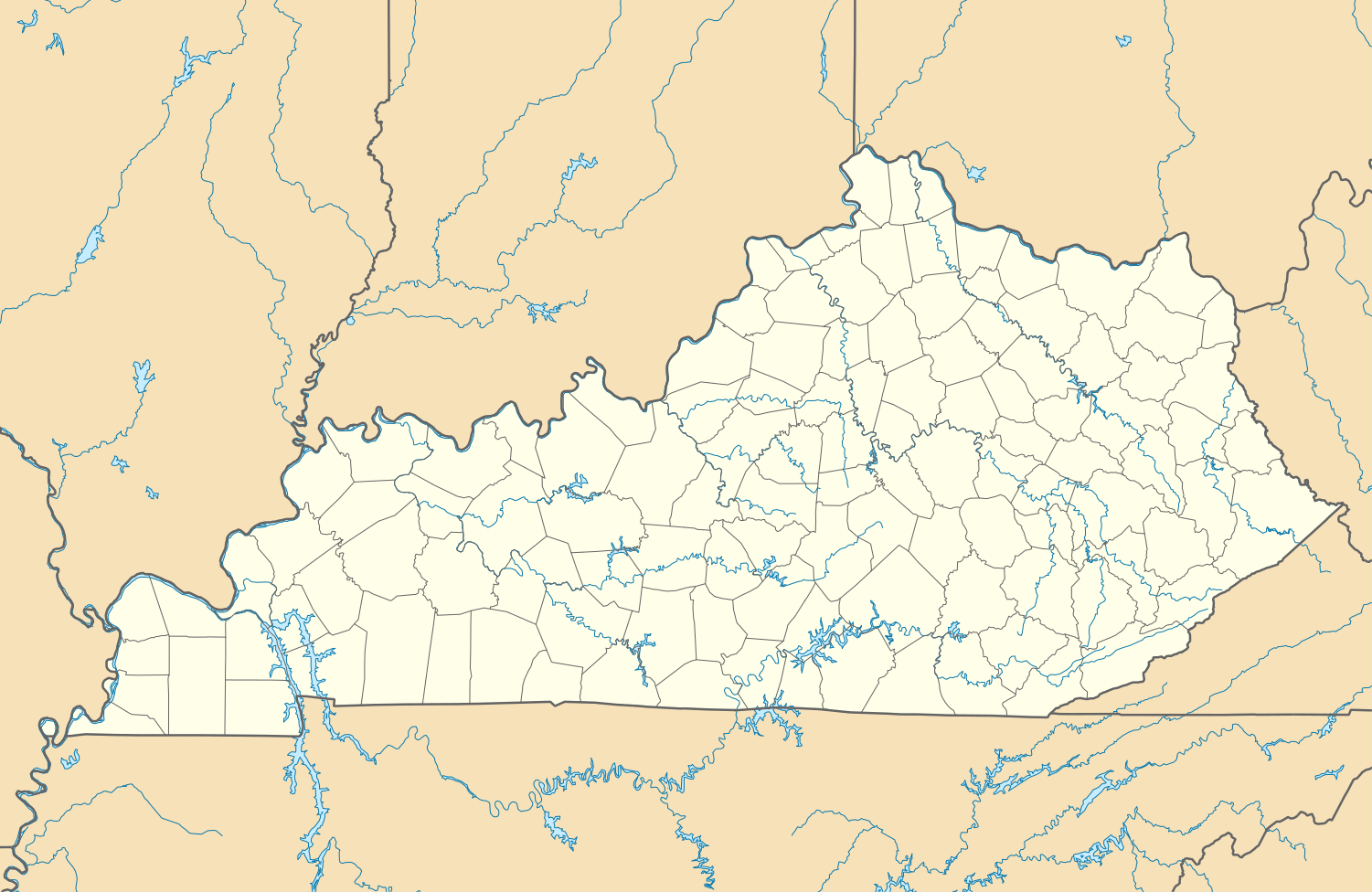Carneal House
|
Carneal House | |
 | |
| Location | 405 E. 2nd St., Covington, Kentucky |
|---|---|
| Coordinates | 39°5′25″N 84°30′17″W / 39.09028°N 84.50472°WCoordinates: 39°5′25″N 84°30′17″W / 39.09028°N 84.50472°W |
| Built | 1815 |
| Architectural style | Georgian |
| Part of | Riverside Drive Historic District (#71000350) |
| Added to NRHP | November 23, 1971 |
The Carneal House is a historic residence located at 405 East Second Street in Covington, Kentucky, United States.[1] Commonly believed to be Covington's oldest surviving structure, the home was begun in the year 1815 by Thomas D. Carneal, one of the founders of the city of Covington. Carneal House is a two-story brick home with arched windows, built in an Italianate-Federalist style and somewhat influenced by late-Renaissance architect Andrea Palladio. Among noted visitors to the home was Revolutionary War hero the Marquis de Lafayette, who paid a call during his final American tour in 1824-1825. House was built for Aaron Gano in 1815 and sold to William Southgate in 1825. Lafayette's visit to the Southgates has been misunderstood, since the visit took place at Mrs.Adelizza Keene Southgate's home in Lexington, where they were visiting. ["Pioneers of Progress: The Southgate Family in Northern Kentucky," Northern Kentucky Heritage Magazine, volume XIX, #2, page 3]
After the death of Mr. Carneal, the home was purchased by William Wright Southgate, a Congressman from Northern Kentucky who circa 1835 added the large west wing as residence for his extended family of thirteen children, in-laws, and household retainers. The home is part of Covington's prestigious Riverside Drive Historic District, and in recent years has operated as a private residence, and as a commercial bed and breakfast.
Locally famous for the supposed preternatural activity within the mansion's noted pink brick walls, Carneal House is said to be possessed by the spirit of "the Lady in Gray," identified according to folklore as a young woman who hanged herself on the grounds in Antebellum times, often described as motivated by a personal rejection at the hands of the visiting Marquis de Lafayette. Historians have been unable to verify either the story of the suicide or the paranormal happenings attributed to the resident ghost. This story is urban legend.
References
- ↑ Federal Writers' Project (1996). The WPA Guide to Kentucky. University Press of Kentucky. p. 151. Retrieved 24 November 2013.
Further reading
- Federal Writers Project. Cincinnati: a Guide to the Queen City and Its Neighbors. Cincinnati: Wiesen-Hart, 1943, 522.
External links
- Carneal House Photo
- Carneal House Photo
- Carneal house slave quarters
- Carriage house at Carneal House